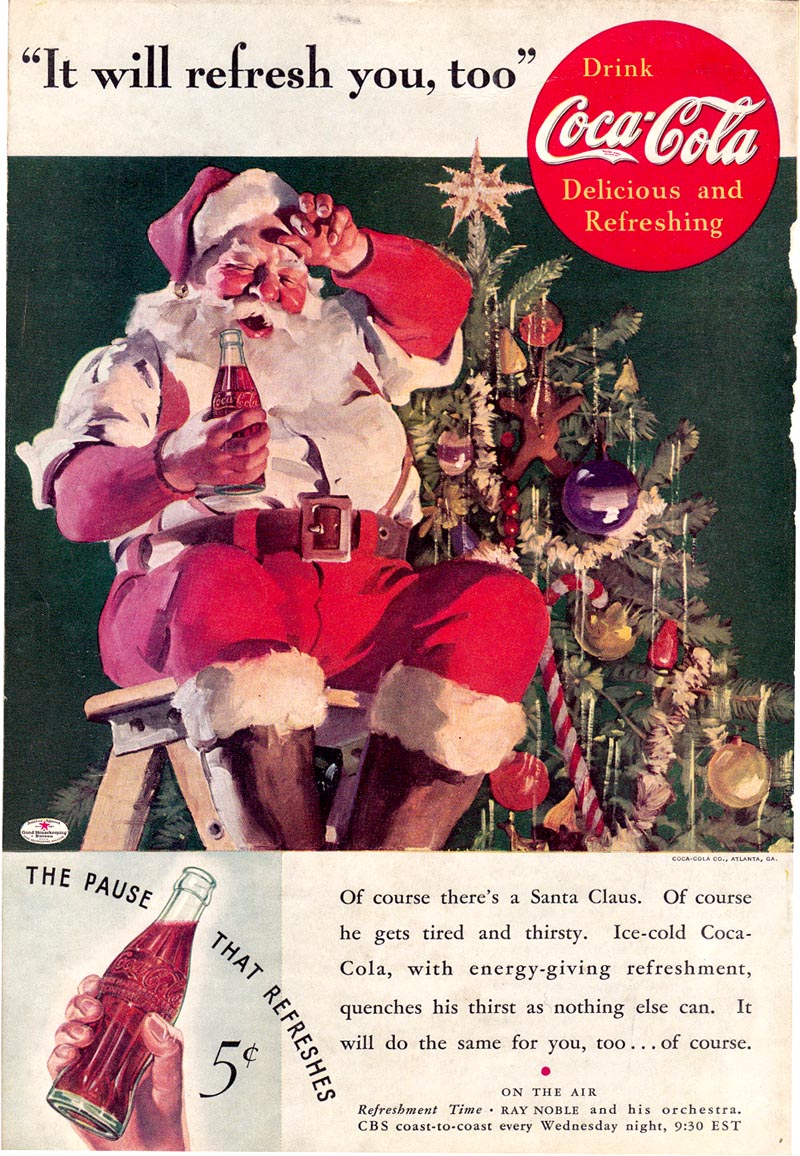
"... but this trivializes his central place in 20th century advertising art. More than any artist including Norman Rockwell, Sundblom defined the American Dream in pictures, proved by his work for virtually the entire Fortune 500."
Often when I'm flipping through the pages of an old mid-century magazine, I'll come across an unsigned piece of advertising art like this example below, and I'll immediately think of Haddon Sundblom. Sunny probably didn't paint this particular illustration, but someone who apprenticed with him - or apprenticed with one of his apprentices - very likely did.
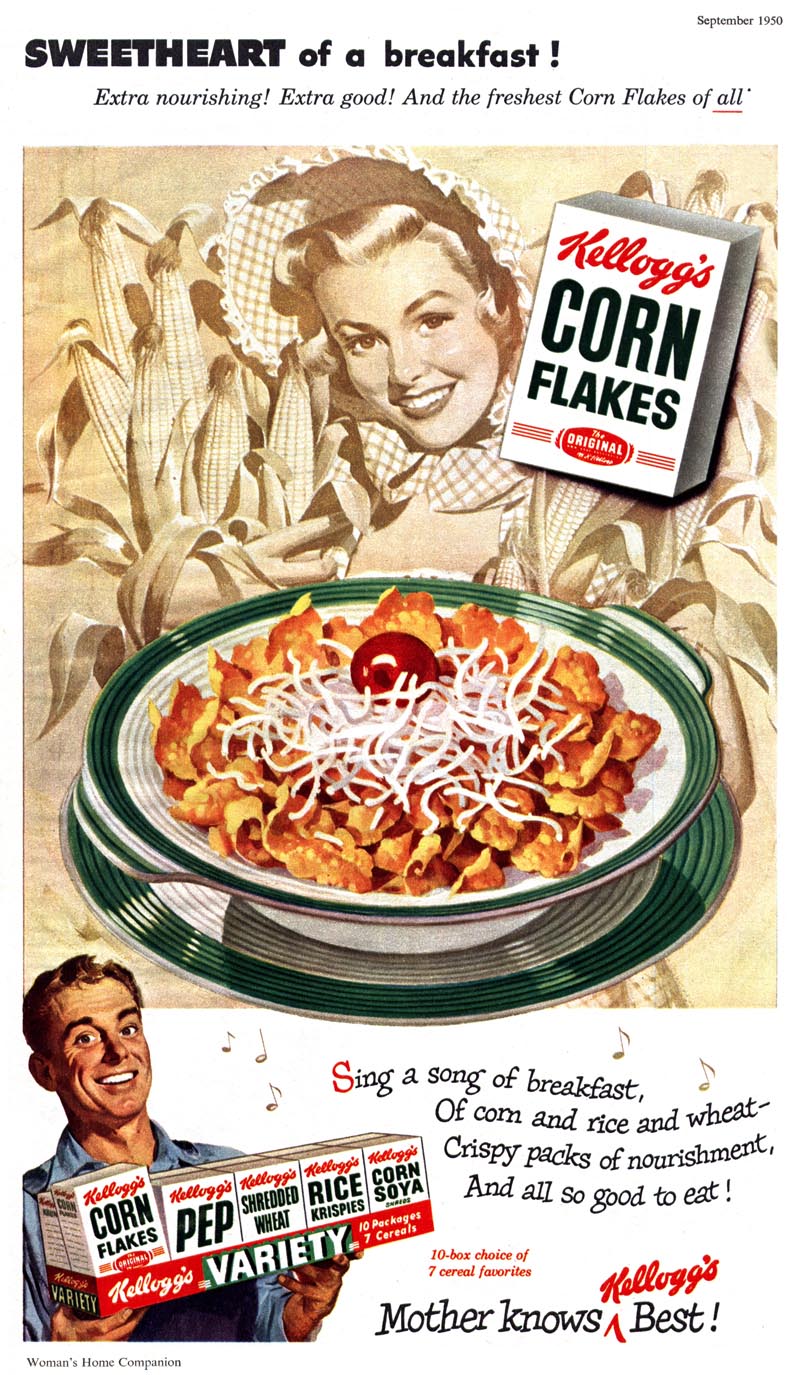
You really can't overstate Sundblom's influence on the field during that era. Earlier in this series I ran a quote from Sunny where he described how hundreds of people had passed through his studio to take up positions in the graphic arts all across America. The day after that post, TI list member Ferol Smith (whose husband was the painter, William A. Smith) sent a note: "I worked in an ad agency in New York in the '40s called Geyer, Newell and Ganger and my boss was an art director who arrived in New York by way of Sundblom's studio in Chicago... Art Surin. He gave up illustration to tell other people how to do it!"
Sure enough, in the 1956 American Artist article on Haddon Sundblom, author Frederic Whitaker includes Arthur Surin among a list of "the art world luminaries who are the direct offspring of the Sundblom personality and who constitute, in part, the "Sundblom School of Illustration." Below, another example from that school - not by Sundblom - but how many (if any) strokes from his brush touched it up before it left his studio?

Howard Terpning isn't on Whitaker's list of luminaries but he too was a Sundblom apprentice. Frequent TI contributor, Harold Henriksen, sent this scan the other day from a book called The Art of Howard Terpning. Terpning was in his early '20s when he was at Sundblom's studio and said he "made this painting for fun." The Sundblom influence is evident.
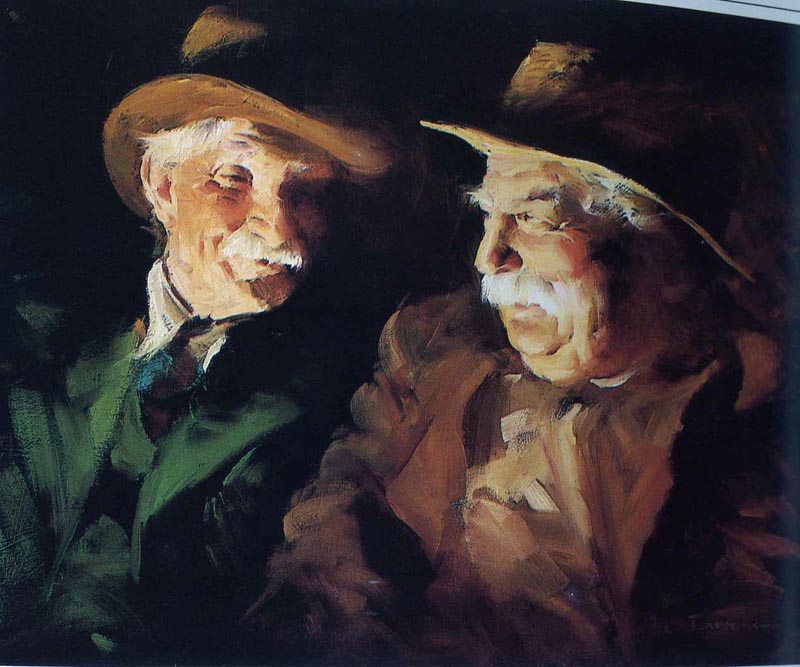
Two other Sundblom Circle members not previously mentioned; Earl Blossom (father of '60s/'70s illustrator David Blossom)...
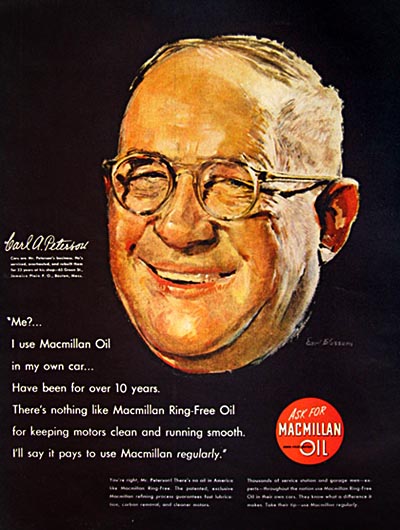
... and Morgan Kane. The bio on Kane's website says "After the war, Morgan moved to Chicago where he worked with well-known illustrators, including Haddon Sundblom and Harry Anderson. During that time he painted many commercial pieces for companies such as Coca Cola..."
For all we know, this unsigned 1947 Coke ad below could have been painted by Kane while working for Sunny.
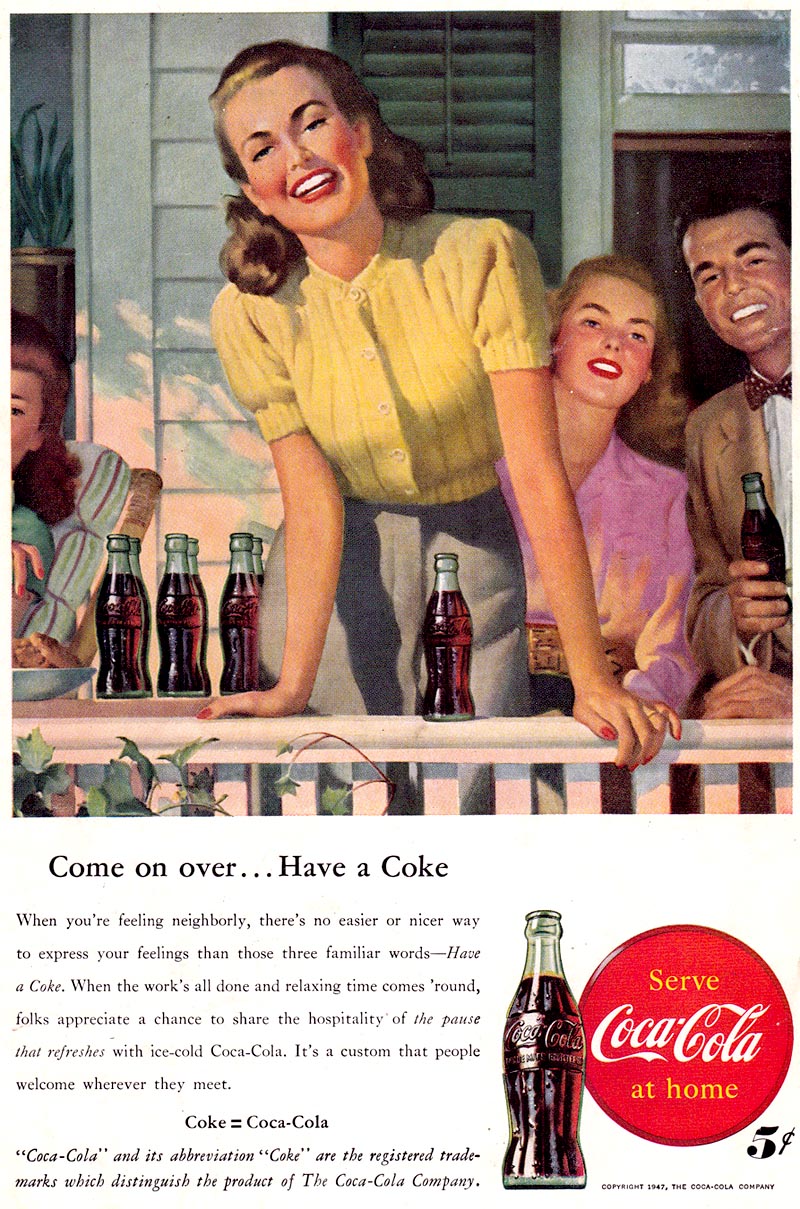
As one commenter noted on the last post, Gil Elvgren (below) is probably the most direct (and most famous) descendant of the Sundblom style.
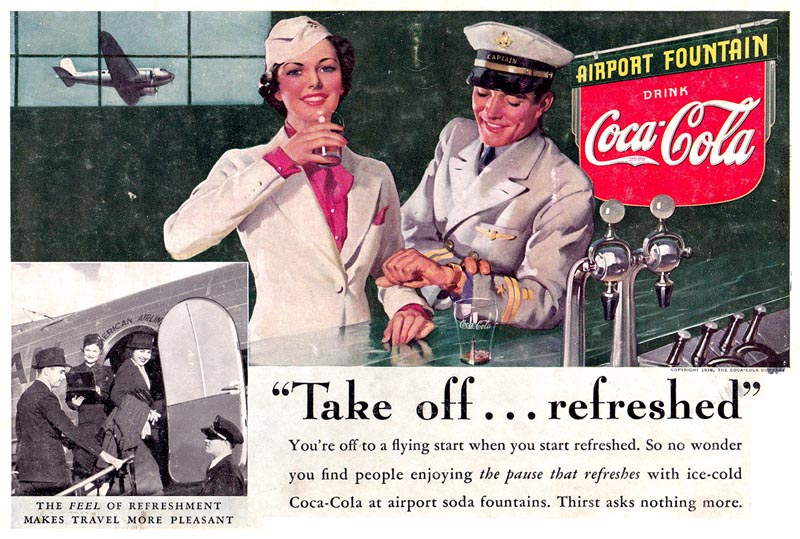
Today's batch of vintage Coke ads were an early Christmas gift from Eric Bowman, who saved a stack of old National Geographics that had been collecting dust at an art studio where he worked 20 years ago. Eric very kindly scanned a whole bunch of the back covers of those Nat. Geo's and emailed them to me last week. Many thanks, Eric!
Here are some more ads by Sundblom apprentices, courtesy of Eric Bowman.
Jack Wittrup...
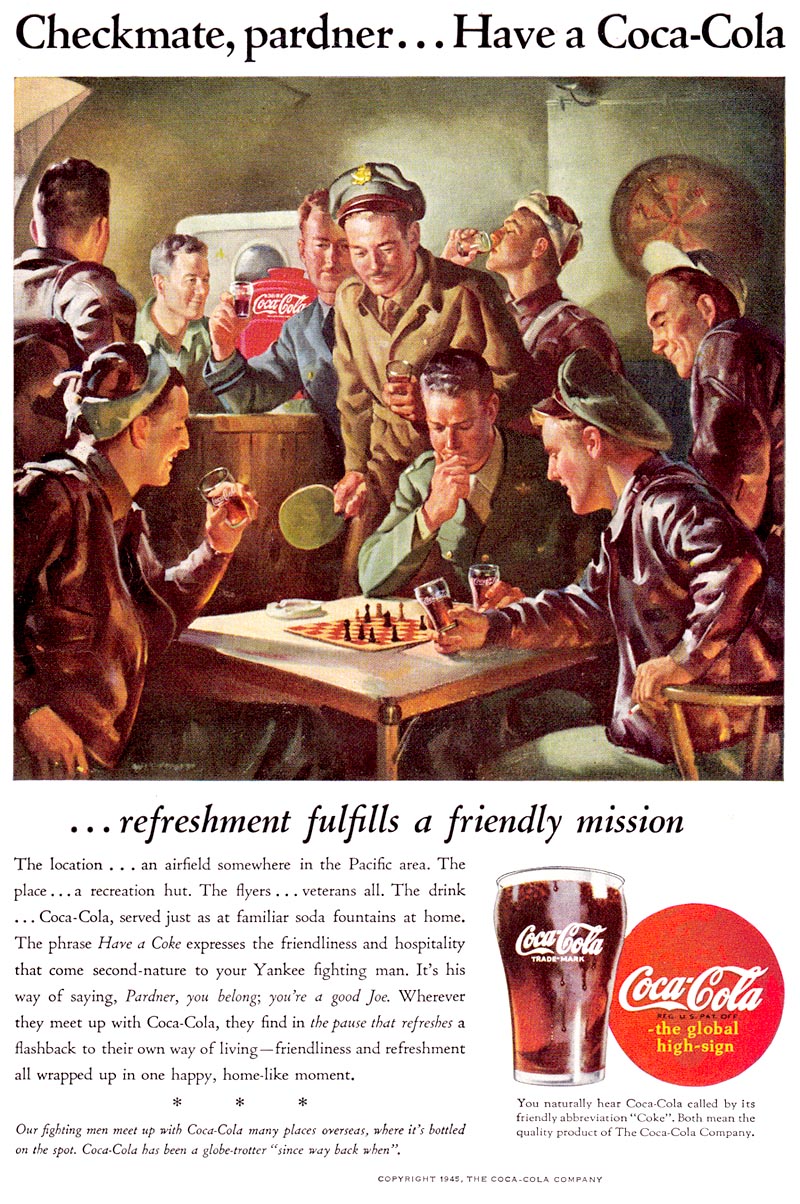
... Nick Hufford...
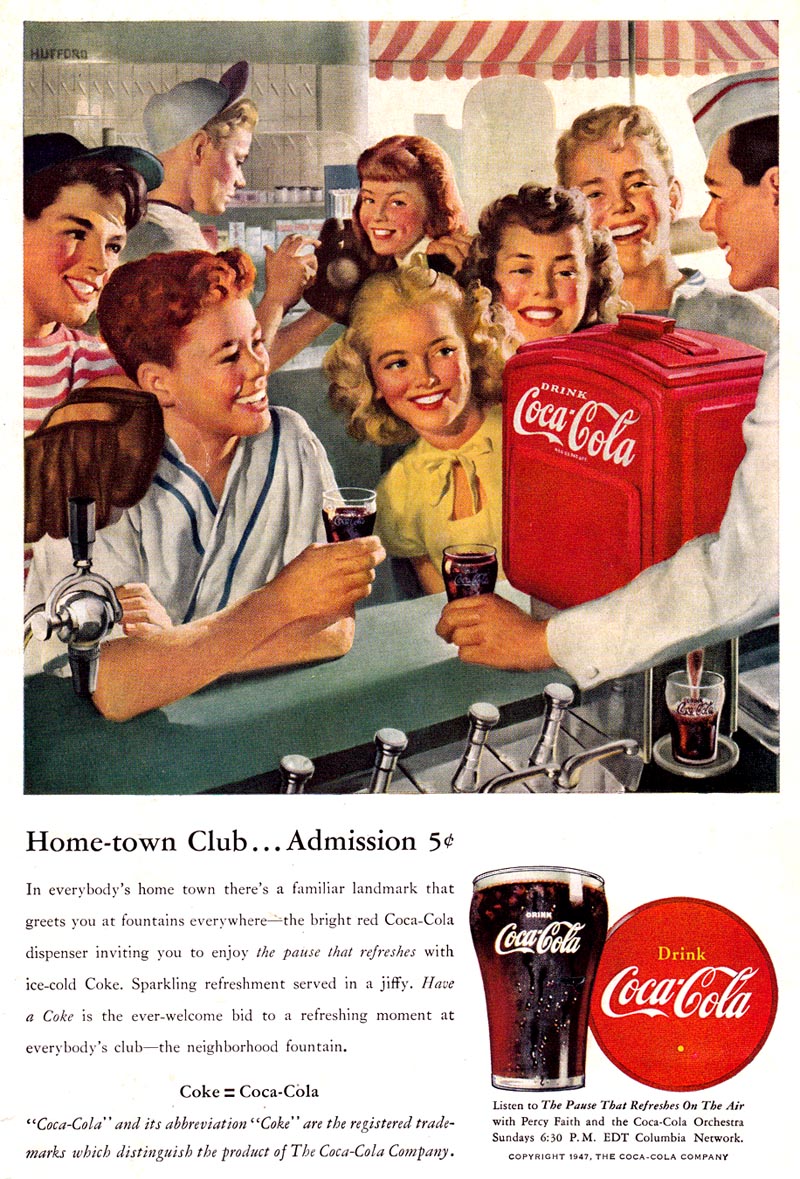
... and Harry Anderson.
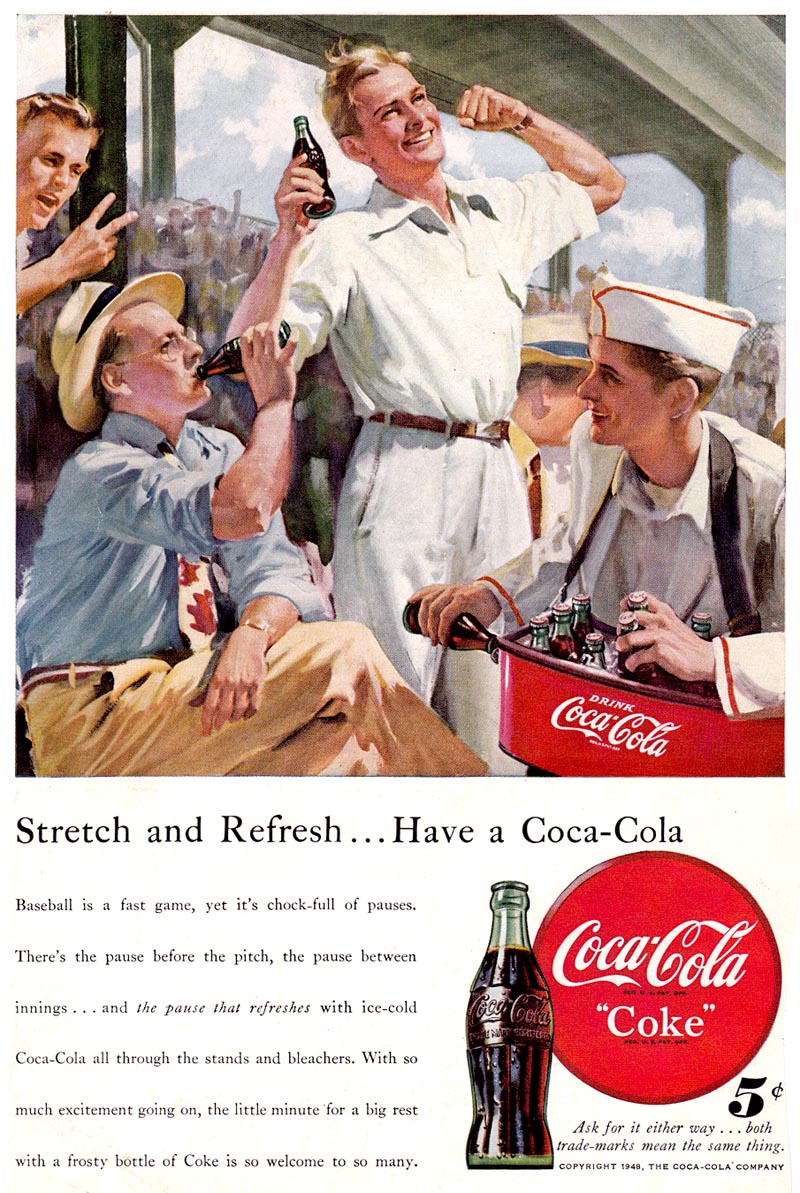
Finally, again, courtesy of Eric,a few more Coca-Cola Santas by Sundblom, from 1939...
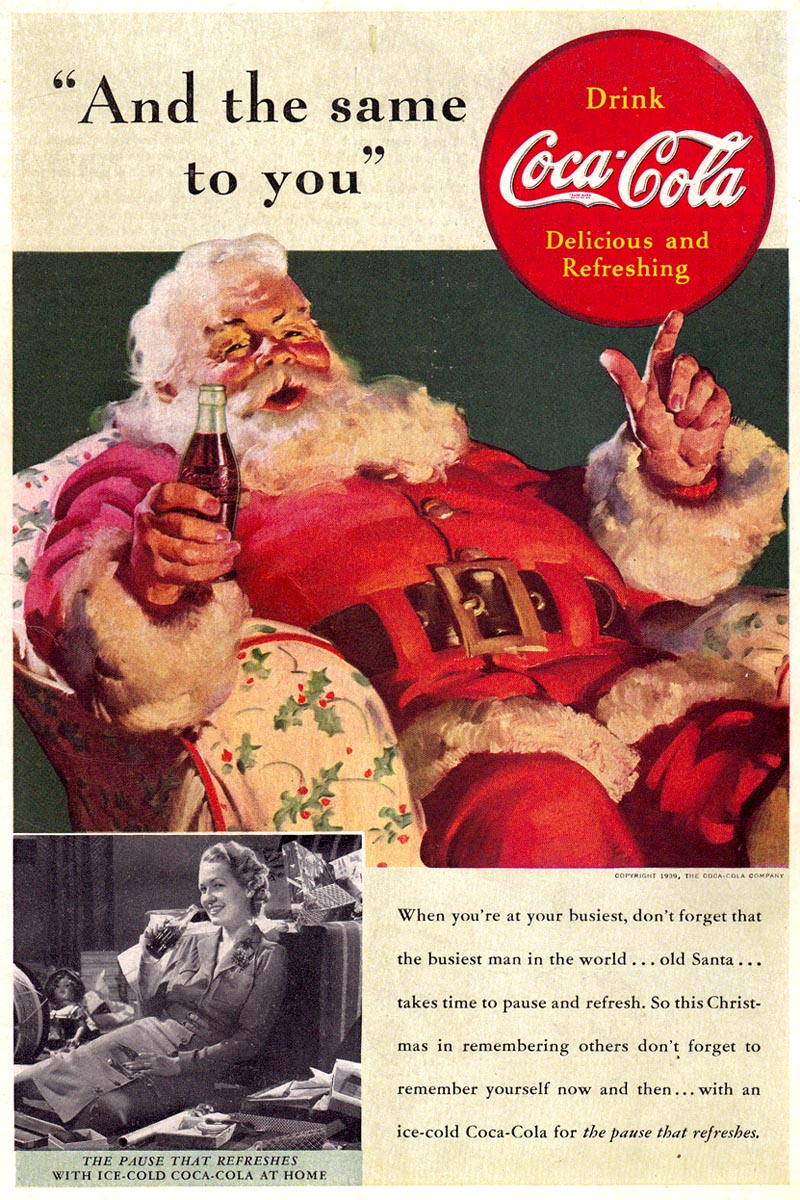
... 1947...

... and 1963.

When Haddon Sundblom was interviewed for American Artist, he spoke with great affection and modesty about his studio and the artists in his Circle. "All I can say is it was an unusual studio where its members without conscious effort or charitable impulse , but rather with a spontaneous spirit of good will, inspired each other and where we learned that its best returns came from the mutual sharing of our various abilities. The place teamed with a genuine art spirit. Steve [Sundblom's studio partner/co-owner, Howard Stevens] and I were simply the guys who fortunately had hired the hall."
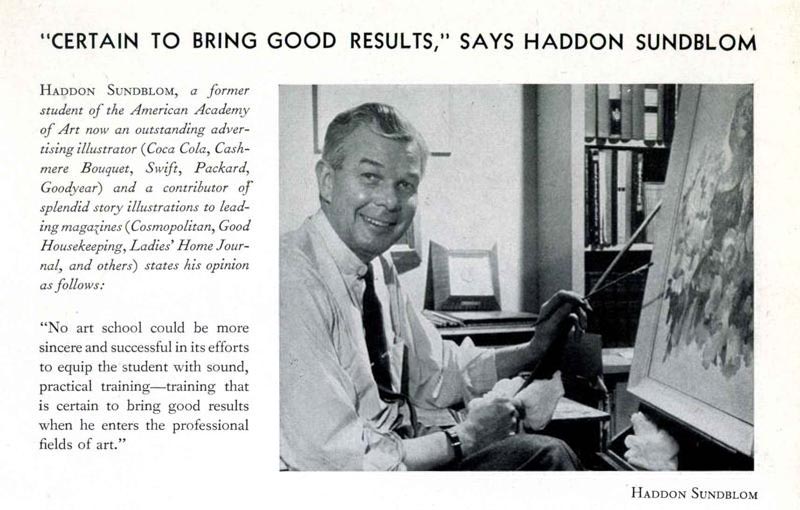
And with that thought, let's call it a day. If ever I could feel like Haddon Sundblom, its in the sense that I had the good fortune to "hire this hall" for the spirit of good will and mutual sharing. This month-long look at one of the greatest illustrators of the 20th century could not have been possible if so many people hadn't jumped in to assist.
* Thanks to Tom Watson for his many early Sundblom scans, to Aron Gagliardo for materials from the archives of the American Academy of Art (including the photo of Sunny directly above), to Heritage Auctions for Sundblom scans from their archives, to Aaron Baker of Playboy Enterprises for information related to Sundblom's "last Santa" (the December 1966 Playboy cover), to Eric Bowman and Harold Henriksen and to everyone who commented here and on Flickr and who retweeted these posts on Twitter and Facebook.
Merry Christmas and Happy New Year, everyone - see you again on January 3rd, 2011!
Merry Christmas!
ReplyDeleteLeif....Can't think of a more important influence, or better choice of mid-century illustrators than Haddon Sunblom. Most of the artists mentioned were contemporaries of mine during those years. I recall seeing many of the ads when they came out....and wonder now if the force and style didn't affect the 'western look' to some degree. As I remember, we tried mightily to NOT look like the Sunblom-oils styles.of illustration. He was highly admired, respected and recognized....but most western illustrators were successful at looking more like the Ludekins, Galli, Bomberger, Brusstar portrayals of subjects. Here it was a much, much smaller market....and we certainly didn't have as prolific a client as the Coca Cola account.
ReplyDeleteThanks so much again for another TI Blog of fascinating illustrative history. And oh yes....Cheers and Merry Christmas!!
Happy New Years!
ReplyDeleteOne ad here outsparkles the other!
ReplyDeleteThat warm brown tone of cola-colour combined with and reflected in all those shiny glasses and bottles.
One of my favourites is Jack Wittrup's composition of chessplayers and folks all clad in cola-brownish shimmering leather-jackets.
This is a great Christmas post! I love it.
ReplyDeletegreat compilation:-)
ReplyDeleteI like the old school of illustrations. at that time they knew how to draw beautifully without using machines. and everything was more realistic
ReplyDelete